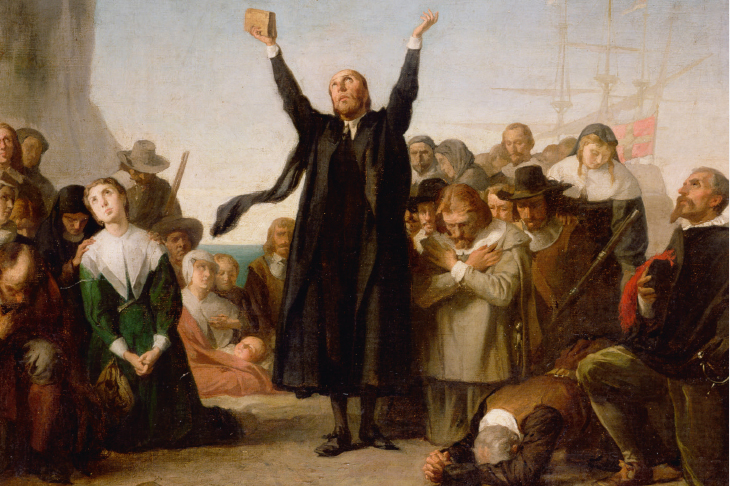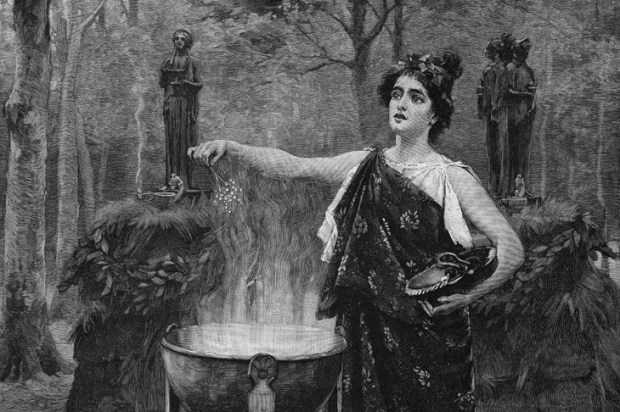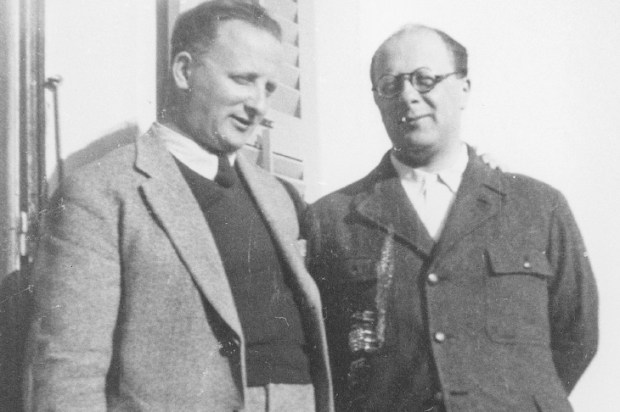What led a person in 17th-century England to get on a ship bound for the Americas? James Evans attempts to answer that question by exploring both the push and pull factors involved.
His descriptions are vivid, so the reader can imagine the life choices that would lead to one finding oneself heaving up over the side of a small ship somewhere in the mid-Atlantic, or watching the burial at sea of a fellow passenger, and hoping to God one had made the right choice. God, of course, was a big part of the choice for many of them.
The Mayflower pilgrims, who landed at Plymouth Rock in 1620, are the quintessential ‘religious liberty’ seekers, so many of whom headed across the Atlantic. They had already been in exile in Holland for 12 years, when the arrival of Spanish authority was likely to put them in danger again.
It is easy to imagine their desire to be free from persecution. What is harder for us to imagine is the depth of their faith: today, when Anglican is almost a synonym for agnostic, the absolute belief in the providence of the Lord that led this group to take such risks is hard for us to grasp.
The emergence of the Pilgrims, a small separatist group mostly from Lincolnshire, at just a time when settling in the Americas became a viable option, was one of history’s coincidences. They did not seem destined for historical importance. Their settlement in Plymouth was tiny, and within 50 years it would be surrounded, swallowed up by the Puritan great migration that followed (the Pilgrims and the Puritans were not the same group, although Evans seems to think they were).
But by another twist of history, during the Protestant revival in the 19th century, the historical reputation of the Pilgrims got the wind behind it. Conscious efforts to build a national identity in the United States — including the invention of Thanksgiving — turned the Mayflower group into the Pilgrim Fathers, spiritual ancestors. Even now most people think they were the first English settlers in America (never mind that Jamestown beat them by more than a decade — royalist, tobacco-planting pirates didn’t really fit the national image).
The focus on New England also means we tend to forget that only a minority of colonists went there. Of the 180,000 Britons who shipped off to North America during the 1600s, 120,000 went to Virginia.
Unfortunately, while the Puritans in New England multiplied, their Chesapeake cousins died. Perhaps 10,000 people arrived in Jamestown between 1607 and 1624: only 1,275 of them were alive at the end of that period. Even after 1630, the death rate in Virginia was double that in Massachusetts. These figures improved over time, but a mortality gap would remain for the next 200 years.
Many of the English who went to Virginia were indentured servants. Evans classifies his emigrants by theme headings including ‘liberty’, ‘fur’, and ‘king’; for the indentured he has the motive ‘despair’. He reminds us that these were volunteers who had signed up for their situation. The changing economy in England during the 17th century meant there were plenty who were willing to trade several years’ labour for cash and land at the end. Of course, the recruiters presented an overly rosy view of life in the colonies, and many would have regretted their choice as they lay dying of hunger or fever in Virginia.
Evans is good on the internal conditions in Britain that made so many want to leave, and he relates in a readable style the lives of people who chose to make the journey. Unfortunately, we know little of what became of many of them. Their personal choices can only be guessed at from limited records.
The literate middle classes were obviously more likely to leave accounts, and those who went for political or religious reasons were generally keen to make this known. But records are fragile. Evans mentions the relatively high literacy rate in New Amsterdam, meaning much more was written down of life in the Dutch territory. He does not mention the archive fire in Albany in 1911, in which many of those papers were lost, being perhaps the reason so little can be found of his New York subjects now.
Nonetheless, some records thought lost are found, as with William Bradford’s Of Plimoth Plantation, his account of the Mayflower voyage and settlement. The manuscript disappeared during the Revolutionary war, and in another of history’s accidents, wound up in the Bishop of London’s library, where it was found in 1850.
Bradford’s story of the Pilgrims’ lives is as vivid as any retelling, with the kind of human moments that remind us they were not so different from us. Soon after arrival, one ill pilgrim ‘lay cursing his wife, saing if it had not ben for her he had never come this unlucky viage’.
Got something to add? Join the discussion and comment below.
Get 10 issues for just $10
Subscribe to The Spectator Australia today for the next 10 magazine issues, plus full online access, for just $10.
You might disagree with half of it, but you’ll enjoy reading all of it. Try your first month for free, then just $2 a week for the remainder of your first year.














Comments
Don't miss out
Join the conversation with other Spectator Australia readers. Subscribe to leave a comment.
SUBSCRIBEAlready a subscriber? Log in